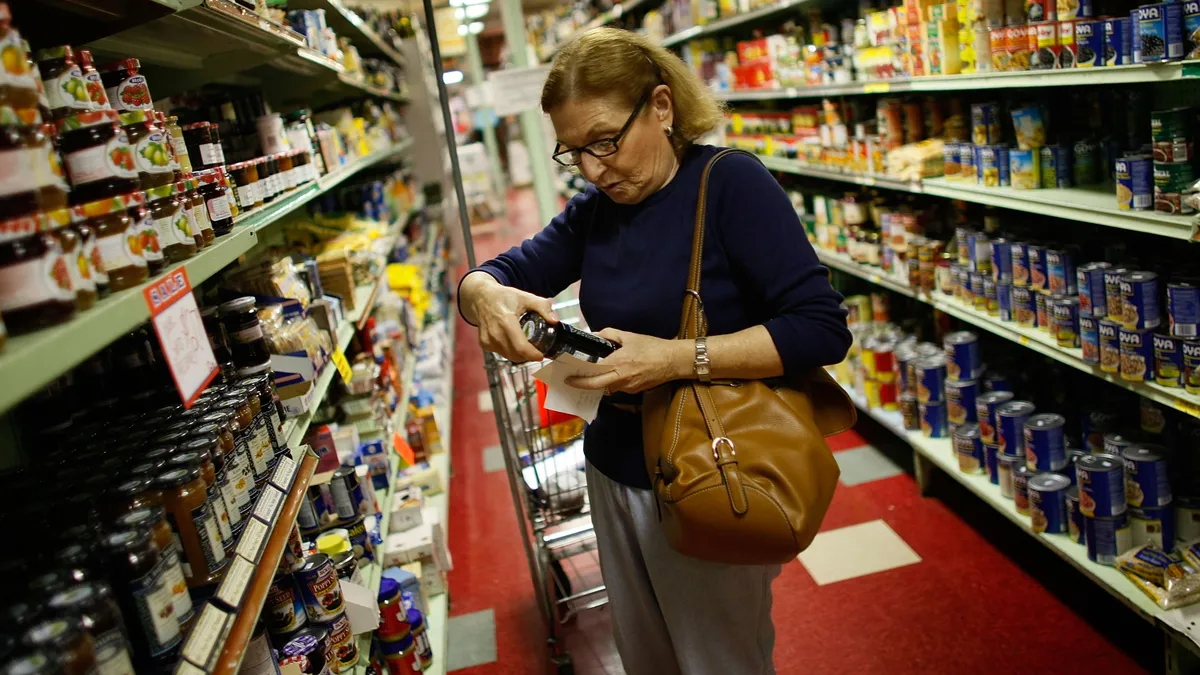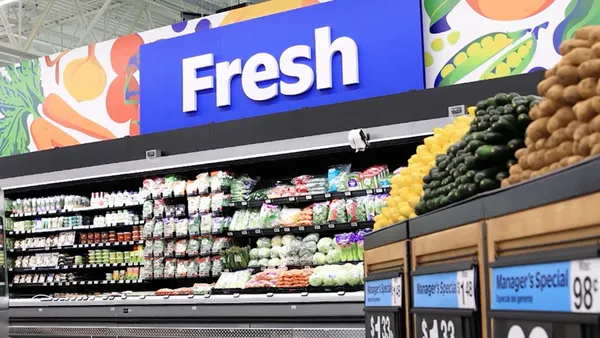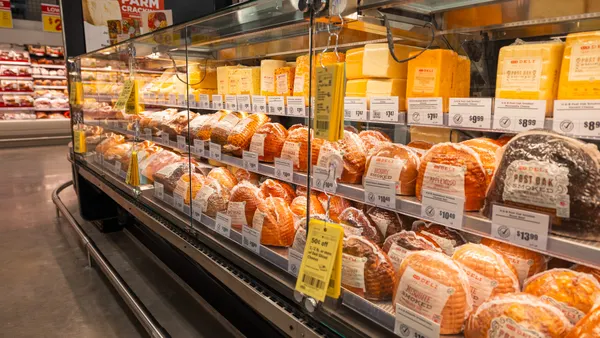Dive Brief:
- Fifty-four percent of consumers surveyed by data firm Numerator say they are moderately or significantly concerned about future price increases during this summer’s inflationary period.
- Fifty-five percent said they have changed their shopping behavior over the past month due to price increases, and 90% say they will make further changes if prices continue to increase.
- The results from the 600-person survey conducted in June and July come as inflation rose 5.4% last month versus the prior year — the highest market since the 2008 financial crisis.
Dive Insight:
Consumers are keeping an eye on grocery store prices, with 66% expecting prices on groceries and household items will get higher for the next six months, the survey found.
Moderate inflation is good for grocers’ bottom lines, but rates of 5% or higher could spur changes to consumer habits that significantly impact store spending, the survey data from Numerator indicates.
A significant percentage of shoppers say they’ll switch retailers and product brands in response to higher prices. Forty-two percent of respondents said they would shift to a lower-priced retailer if significant inflation continues, while 35% said they would do so amid slight inflation. Sixty percent say they’ll switch to lower priced brands if significant inflation continues while 49% said they would do so against a slight inflationary environment.
Economic experts predict the rate will eventually slow down in the months ahead. Kiplinger recently forecasted inflation will start to fall by the end of the year, with prices 5.5% higher at the end of 2021 than a year ago. Jerome Powell, the Federal Reserve chair, told Congress this month he expects inflation to start decreasing in roughly six months, the New York Times reported. Meanwhile, Red Apple Group CEO John Catsimatidis, who owns the Gristedes Supermarkets grocery chain in Manhattan, told Fox Business he predicts the annualized inflation rate to be 6% in October.
How consumers respond to inflation increases varies according to their spending power, according to Numerator’s survey. Those with low purchasing power are more likely to trade down product brands than they are to switch retailers, while shoppers with medium purchasing power are the least likely to change their behaviors but also the most likely to switch retailers. Those with high purchasing power, unsurprisingly, are the least likely to trade down product brands.
Across spending groups, consumers say they plan to cut discretionary funding to deal with inflation. For example, 74% of consumers surveyed said they plan to spend less money at bars and restaurants if inflation continues. Those with higher purchasing power saying they’ll cut back on apparel spending, while those with lower purchasing power reporting they’ll pull back on travel, electronics and other nonessentials.
High inflation bodes well for discount retailers like Walmart and Aldi as well as those that target high-income consumers. But Numerator’s data indicates conventional retailers could retain loyal shoppers and possibly even nab new ones, with 45% indicating they intend to seek out additional discounts and promotions with even slight inflation.
Catherine Douglas Moran contributed to this story.














